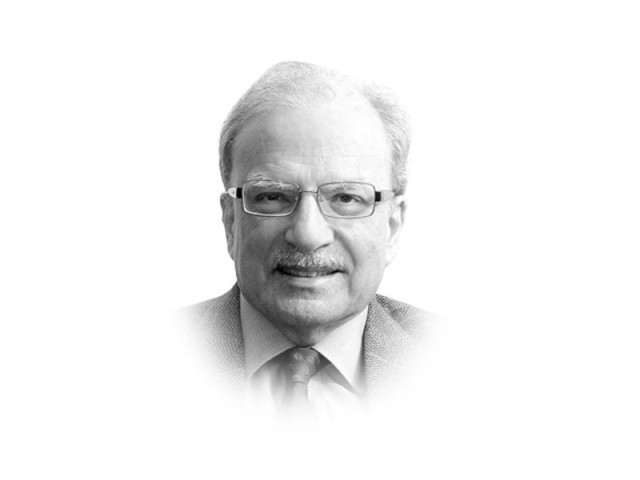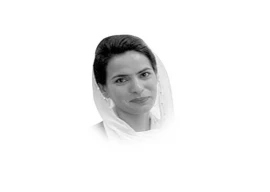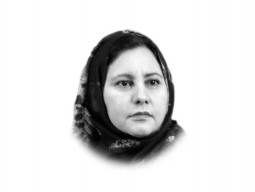
The Constitution requires the reapportionment of National Assembly and provincial assembly seats on the basis of decennial population counts. According to Article 51(5), “the seats in the National Assembly shall be allocated to each Province, the Federally Administered Tribal Areas, and the Federal Capital on the basis of population in accordance with the last preceding census officially published.” Article 51(3) distributed 332 seats among the federation’s constituent parts, including 10 seats for minorities, the National Assembly was to have 342 seats with Punjab 183 seats, Sindh 75, Khyber-Pakhtunkhwa 43, Balochistan 17, FATA 12 and the federal capital 2.
There will be losers and winners as the seats are redistributed on the basis of the 2017 count. It is understandable that those who are embedded in the established political order prefer the status quo. Now that a census has been held, we should see a fairly significant impact on the distribution of political power in the country. To begin with, we will see greater urban participation in the legislative process at the federal as well as provincial levels.
There will also be economic consequences flowing from the population count. The Eighteenth Amendment to the Constitution has given more power to the provinces in a number of areas. However, the resources needed for exercising the delegated powers come mostly from the federal government. The formula for distributing these is decided by the National Finance Commission that has representation from the federal government as well as all the provinces. According to Article 160(1), “the President will constitute the NFC every five years to make recommendations as to the distribution between the Federation and the Provinces of the net proceeds of the taxes” that contribute to the divisible pool. All the NFCs constituted to date have given a heavy weight to the population in determining the distribution formula. Punjab with almost 60 per cent of the total population has been receiving the largest share from the federal pool but less than its share in the population.
The new census should provide a detailed report of the country’s demographic situation. While of most interest will be the estimate of the size of the population, social scientists will look forward to a number of other details that were collected in the house-to-house survey. This is a subject I will often visit in this space in the weeks to come. Today I will mention the half a dozen or so bits of information the count will provide.
Pakistan Economic Survey, 2016-2017 released by the finance ministry a few days ago has estimates the size of the population in 2017, its rate of growth and its urban-rural distribution. All these numbers will be revised by the census. It would be interesting to note how close the ministry was to the real picture. According to the survey, Pakistan’s population was 197 million in 2017 and was growing at the rate of 1.86 per cent a year. There was a steady decline in the growth rate; in 2015 it was estimated at 1.92 per cent. If this trend continues, the growth may decline to 1.5 per cent by the end of the decade. However, even at this diminished rate, the size of the population could double in 48 years, reaching 400 million by the year 2065.
While the total fertility rate at 3 per woman is still high, it has been declining steadily. It was 3.2 in 2015. The replacement rate is 2.1. It will take a while before Pakistan can reach that level. Only then will the size of the population stop increasing. Other large Asian nations have already reached this steady state or are near it. In China, for instance, the working age population fell for the first time in 2012 and has been declining since. China will get old before it gets rich.
According to the survey, 80.72 million people live in urban areas. This means that 40.5 per cent of the population is urban. Two years earlier, the urban population was estimated at 75.19 million, or 39.2 per cent of the total. This translates into a rate of growth in urban population of 3.6 per cent a year or twice the rate of increase in total population. This is an underestimate and is not likely to be corrected by the 2017 census. I believe the censustakers have not revised their definition of an urban area. A significant proportion of the urban population resides in the country’s two mega cities — Karachi and Lahore. The two together account for 37 per cent of the total urban population.
Life expectancy has been increasing and is now estimated at 68.2 years for women and 65.8 years for men. The higher rate for women is normal for all populations; the female life span will be lower only if women don’t have good access to healthcare. Pakistan for years had very high rate of maternal mortality. That has declined quite significantly, again pointing to better access to health facilities by women.
All these numbers will get to be revised by the 2017 census. What kind of revisions occur will tell us a great deal about the demographic trends in the country.
Published in The Express Tribune, June 5th, 2017.
Like Opinion & Editorial on Facebook, follow @ETOpEd on Twitter to receive all updates on all our daily pieces.















COMMENTS
Comments are moderated and generally will be posted if they are on-topic and not abusive.
For more information, please see our Comments FAQ